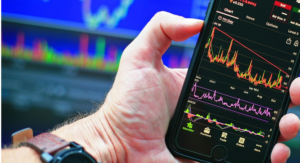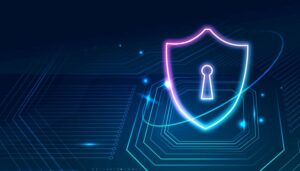Understanding MAC Address in Computer Network

Understanding MAC Address in Computer Network
A code is required to enable communication between two computers or transfer data from one computer to another. Various addresses (codes) are used in computer devices, each of which works at a different layer to facilitate computer networking.
For now, we are concerned with the MAC address which is a unique hardware identifier assigned to each computer device. The manufacturers allocate unique alphanumeric codes (MAC addresses) to the devices so that they can be easily identified on the network.
Using a MAC address vendor lookup tool, network administrators and security professionals can quickly determine if a device on their network is from a trusted manufacturer or if it is potentially a rogue device posing a security threat. Additionally, MAC address lookup tools can be used to troubleshoot network connectivity issues by identifying the manufacturer of a device that may be causing the problem.
If you want to gain in-depth insights into “what is a MAC address” and “how does it work,” then read this article to the end.
History Of MAC Address
Xerox Network Systems originally developed the IEEE 802 MAC address. There are potentially 248 (over 281 trillion) possible MAC addresses within this 48-bit address space. IEEE allocates MAC addresses. Once known as MAC-48, these addresses are now known as EUI-48 identifiers and are managed and allocated by IEEE.
The MAC-48 and EUI-48 identifiers differ only in their name and application. MAC-48 identifies hardware interfaces within existing 802-based networking applications. At the same time, EUI-48 identifies other devices and software, such as Bluetooth, that use 802-based networking.
The IEEE has discontinued the MAC-48, and the EUI-48 standard is now used in all cases. Also, the EUI-64 numbering system originally included MAC-48 and EUI-48 identifiers through a simple translation process.
Now, let’s find out “what is a MAC address.” Following this, we will learn the rest of the required information about it.
Media Access Control (MAC) Address
The MAC address is a unique 48-bit hardware identification number embedded into a network card (also known as a network interface card) at the manufacturing time. The physical addresses are also known as MAC addresses.
Data Link Layer (DLL) is divided into two sub-layers according to IEEE 802:
- Logical Link Control (LLC) Sublayer
- Media Access Control (MAC) Sublayer
The Media Access Control (MAC) sub-layer of the Data-Link Layer uses the MAC address. There are millions of network devices, each with a unique MAC address.
Format of MAC Address
MAC addresses comprise 12-digit hexadecimal numbers (6-byte binary numbers), usually expressed in colon-hexadecimal form. The first six digits identify MAC addresses (00:40:96), called the OUI (Organizational Unique Identifier). The IEEE Registration Authority Committee assigned these MAC prefixes to registered vendors.
The following are some OUIs from well-known manufacturers:
3C:5A:B4 – Google, Inc.
CC:46:D6 – Cisco
00:9A:CD – HUAWEI TECHNOLOGIES CO., LTD
3C:D9:2B – Hewlett Packard
Types of MAC Address
To fully understand the working and importance of MAC addresses, you must know about their types. Three types of MAC addresses are discussed below:
Unicast
Unicast communication sends messages from one device to another on the same network. A frame should reach only one receiving NIC if the LSB (least significant bit) of the first octet of an address is zero. Source machines always have a Unicast MAC address.
MultiCast
Multicast communication is between one device on the network and many, but not all, devices on the network. A Layer-2 (Ethernet) Multicast address has an LSB (least significant bit) of one in the first octet. IEEE has assigned the address block 01-80-C2-xx-xx-xx (01-80-C2-00-00-00 to 01-80-C2-FF-FF-FF) to group addresses for use by standard protocols.
Broadcast
Broadcast communication is the communication process from one device on the network to all devices. A broadcast address is an Ethernet frame with one in all bits of the destination address (FF-FF-FF-FF-FF-FF). Computers belonging to that LAN segment will receive frames with MAC addresses FF-FF-FF-FF-FF-FF.
Characteristics of MAC Address
MAC addresses are unique identifiers manufacturers assign to network adapters and network interface cards (NICs) for identification and are used in the Media Access Control protocol sub-layer.
Ethernet MAC addresses are 48-bit binary values of 12 hexadecimal digits (4 bits per digit). Because of the flat structure of MAC addresses, they cannot be routed over the Internet. In the case of serial interfaces, MAC addresses are not used. The address does not contain a network or host portion.
MAC Cloning
ISPs use MAC addresses to assign IP addresses to gateway devices. When a device connects to the ISP, the DHCP server records its MAC address and assigns it an IP address. As a result, the system can now be identified by its MAC address.
If the device is disconnected, it loses its IP address. When a user requests to reconnect, the DHCP server checks whether the device was previously connected. If it is connected, the server attempts to assign the same IP address (if the lease period has not expired).
If the user changes the router, they must inform the ISP about the new MAC address. This is important since the new MAC address is unknown to the ISP, and the connection can only be established with the approval of your internet service provider.
Another option is the cloning of the registered MAC address with the internet service provider. This way, the router will continue to report the old MAC addresses to the ISP, and there will be no problems with the connection.
Bottom Line
To answer the question “what is a MAC address” we would simply state that the MAC address (also known as physical or hardware address) is an alphanumeric code assigned to each electronic device. This unique identification code helps the network identify and locate computer devices connected to the internet. It helps the best to troubleshoot local area network errors.
Lucas Noah is a tech-savvy writer with a solid academic foundation, holding a Bachelor of Information Technology (BIT) degree. His expertise in the IT field has paved the way for a flourishing writing career, where he currently contributes to the online presence... Read more




